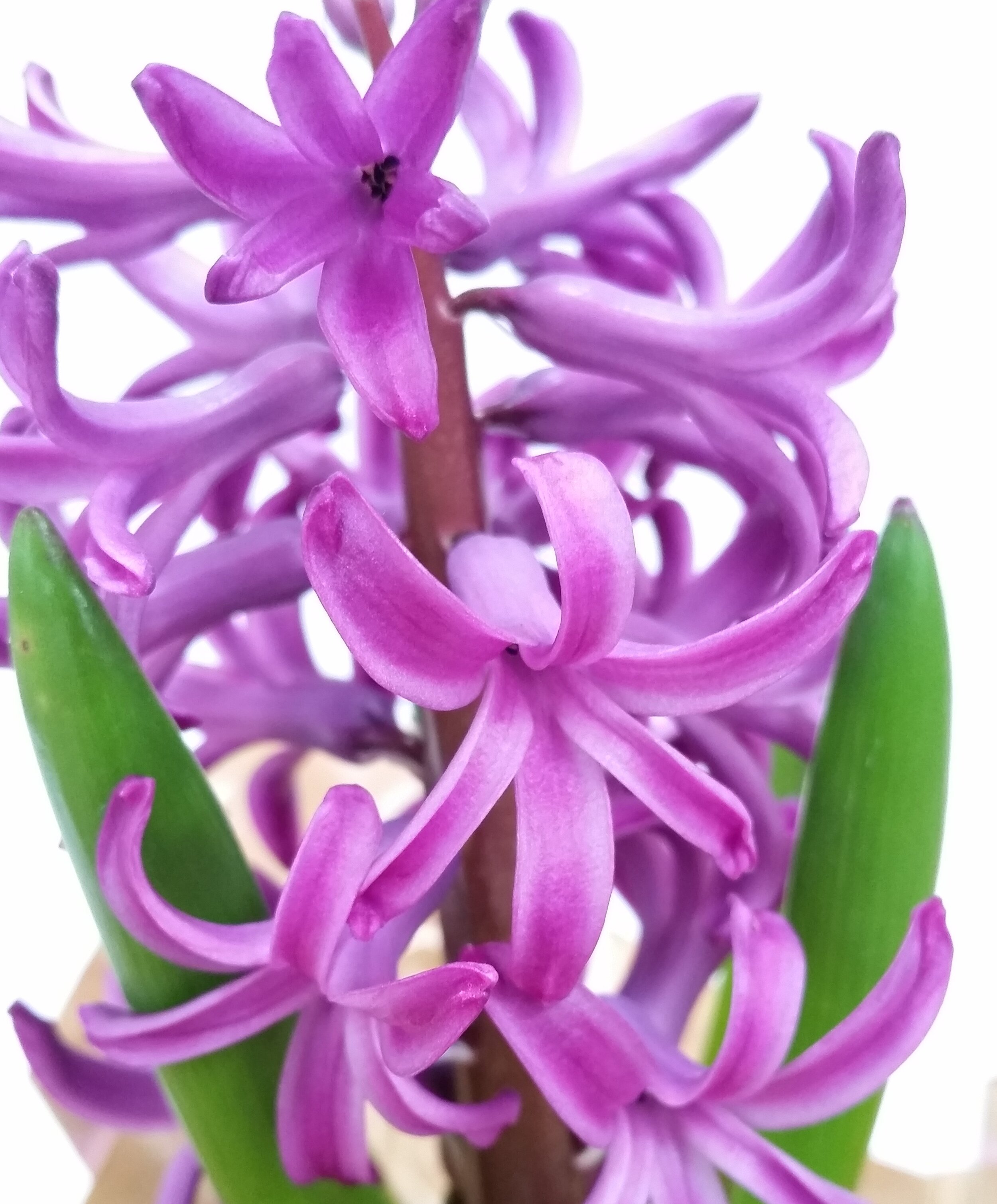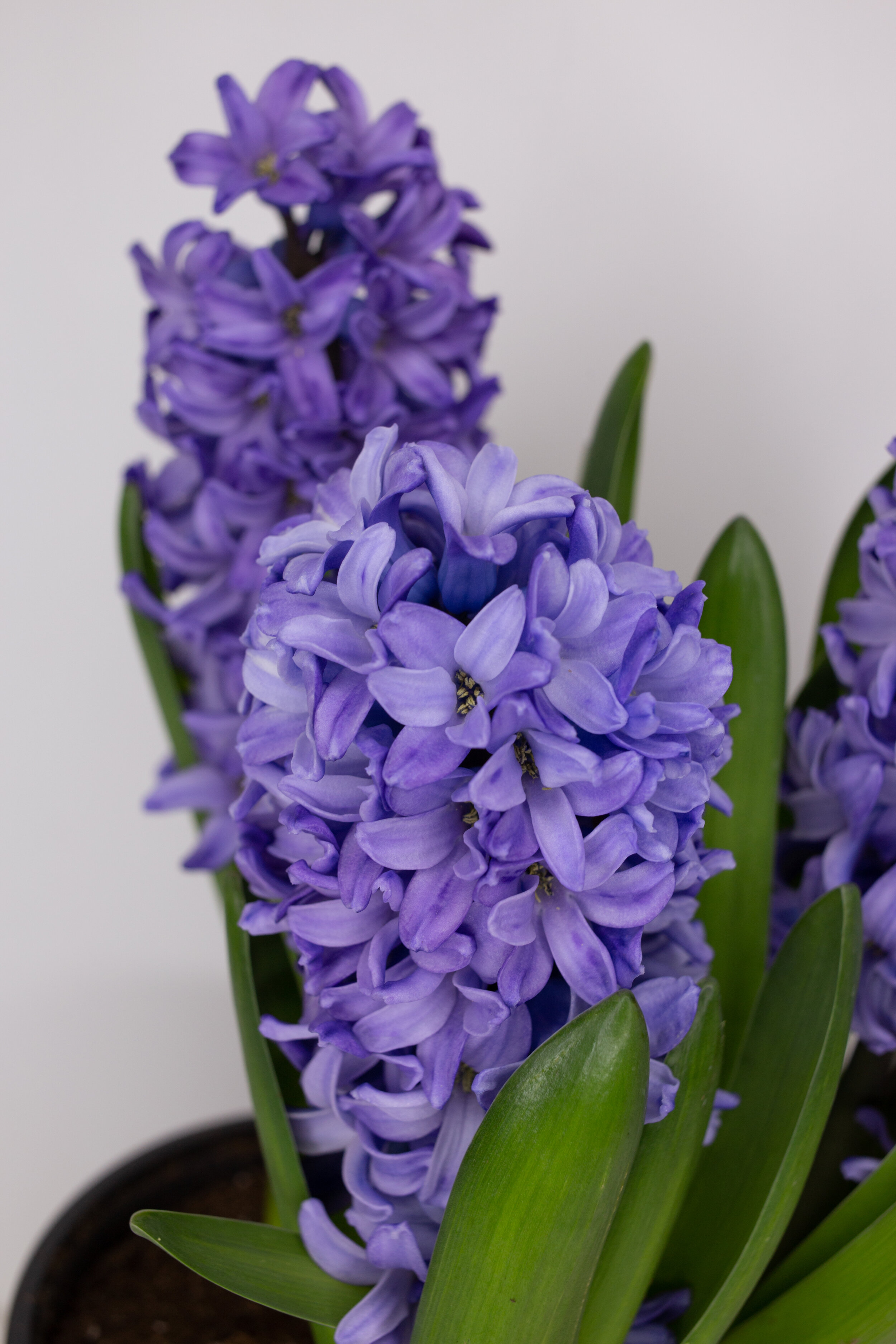Hyacinth
The Flower of
Perfumed Joy
Hyacinths are one of the most popular spring flower bulbs for growing indoors. They provide vibrant floral color with tall spikes of eye-catching blooms and bright green foliage. They have an incredible fragrance that can perfume any space and can be found in a rainbow of colors including white, pink, lavender, cobalt blue, deep purple and wine red. They bring much needed cheer to your home after the dark of winter.
Hyacinth Care Line Classification
Care Information
Light
Bright, indirect sunlight.
Temperature
Hyacinths perform best at 60-70°F.
Water
Allow soil to dry between thorough waterings. Remove wrap or decor before watering. Drain off all excess water. Do not allow plants to stand in water.

The Hyacinth: Deep Dive
Season
Late winter through spring
Care
Hyacinths bloom best between 60-70 degrees in full sun, such as on a windowsill that receives bright sun most of the day. They tend to stretch and grow towards the light. Check soil often to maintain consistent soil moisture (usually 2” of water a week). Best to take off wrap/container and place in a sink before watering to allow it to drain from the bottom of the pot. Once pot has drained, replace to original spot.
Home to Garden
Hyacinths are perennials that will come back next year, especially when potted indoors. Remove dead flowers by clipping the stem close to the base of the plant. After the bloom fades away, leave the pot in the sun and warm location, continuing to water, until the existing foliage turns yellow and withers. After the leaves have died, remove bulbs from the soil and put them in a paper bag. Store in a dark, cold location such as a basement or garage (40-45 degrees) or place the pot in the refrigerator (free of fruit that releases ethylene gas) for 12-16 weeks. Plant outdoors, usually in late fall for early spring blooms. Water after planting and not again until the leaves appear.
Flower Meaning
Legend has it that the origin of the hyacinth can be traced back to a young Greek boy named Hyakinthos. As the story goes, two gods – Apollo the sun god, and Zephyr the god of the west wind – adored Hyakinthos and competed for his attention. One day, while Apollo was teaching Hyakinthos the art of throwing a discus, Zephyr, in a jealous rage, blew the discus back, killing Hyakinthos with a strike to the head. Apollo, brokenhearted, noticed that a flower sprung up from the blood that was spilled and named the flower hyacinth in honor of the boy. This symbol of the hyacinth flower has remained pretty simple throughout history. Symbolizing sport or play in the language of flowers, hyacinth represent constancy, while blue hyacinth expresses sincerity.
Fun Facts
The name ‘hyacinth’ can be traced back to ancient times. It is a relic of a non-Greek language, sometimes referred to as Thracopelasgian, spoken approximately 4,000 years ago. Apparently connected with the blue color of water, its name indicates a reference to the original species, Hyacinthus orientalis, which tended to be blue in color.
The present day hyacinth, or “Dutch” hyacinth, was prevalent in ancient times as a wildflower in many parts of the eastern Mediterranean, through Asia Minor and Syria into Iran and Iraq. Many other oriental varieties have been depicted ever since the 16th century. Fashion has also been a huge factor in the hyacinth’s extreme popularity. Madame de Pompadour was a big promoter of these sweet-smelling blooms. She ensured that Louis XV had many hyacinth plants throughout his various palace gardens. Hyacinths became a staple in many great halls, as well as embellishing the frail necks of high society.










